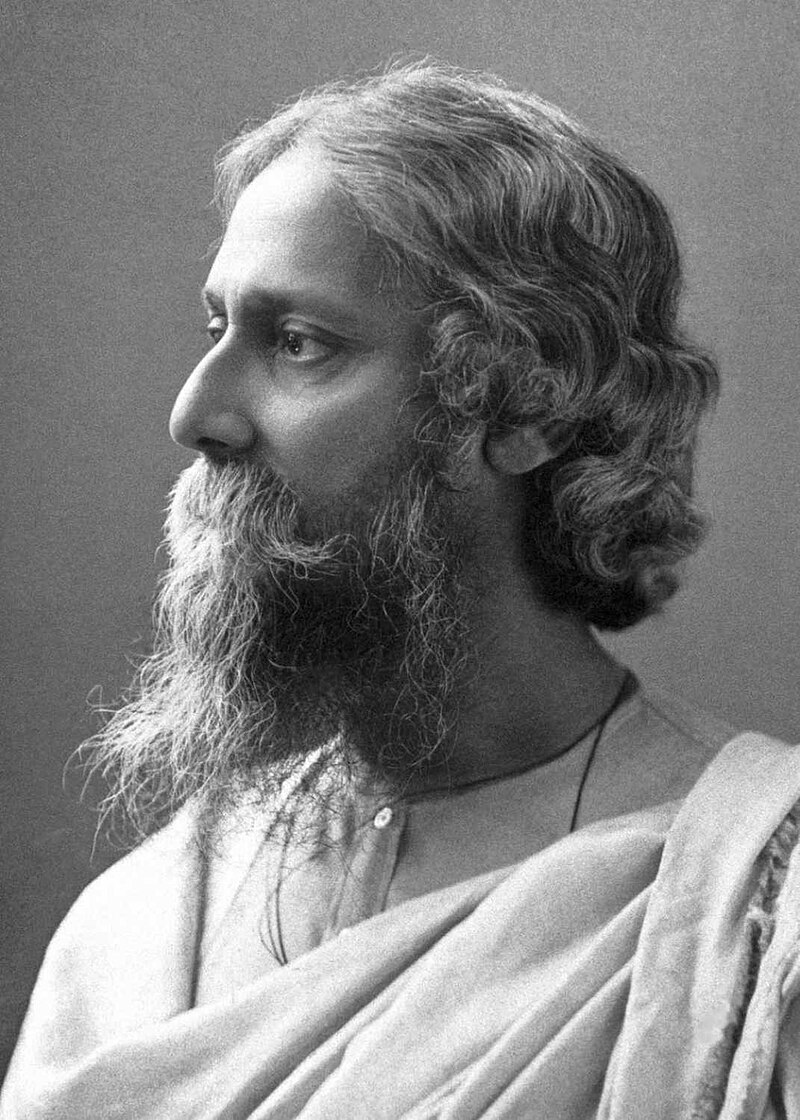Shane Dias
Gitanjali 35
Where the mind is without fear and the head is held high;
Where knowledge is free;
Where the world has not been broken up into fragments by narrow domestic walls;
Where words come out from the depth of truth;
Where tireless striving stretches its arms towards perfection;
Where the clear stream of reason has not lost its way into the dreary desert sand of dead habit;
Where the mind is led forward by thee into ever-widening thought and action
Into that heaven of freedom, my Father, let my country awake.

(The picture shows the man having no fear when he is climbing up the mountain which is a theme in the poem. It also shows the freedom the man has to go wherever he wants which is a theme in the poem.)
Rabindra Nath Tagore
- Born in Calcutta, India in 5-7-1861
- Reshaped Bengali literature and poetry
- Was a humanist, universalist, internationalist, and anti-nationalist
- Won Nobel prize in literature in 1913
- Part of Tagore family which was one of the richest and most influential in India
Poem Analysis
In the first section of the poem, the poet is expressing the idea of having no borders and having a free flow of information and knowledge. In the second section of the poem, the author dives into the idea of the mind and body reaching towards perfection and freedom. The speaker of the poem is Rabindra Nath Tagore and he is speaking to his country, India. His background of being an internationalist and an anti-nationalist contributes to the theme, of breaking down borders and letting information and people flow freely, in the poem. Figurative language is used throughout the poem. In line 6 the poem says, ¨ Where the clear stream of reason...¨, this is an example of personification used in the poem with the stream showing the human-like characteristic of being able to reason. Personification is also used in line 5, "Where tireless striving stretches it arms toward perfection." The authors use of personification shows that the march toward perfection will have mistakes like humans make. The repetition of the word where tells the reader the author is looking for a place for his ideas. The poem is one stanza whit no rhyme scheme. This shows disunity in the world currently. The author is hopeful for a better future. He shares his dreams of the future which accentuate the tone of hopefulness. There is also an inspirational tone that comes with the hope for a better future. The theme of unity in the world and cooperation between nations stands out in the poem.
In the first section of the poem, the poet is expressing the idea of having no borders and having a free flow of information and knowledge. In the second section of the poem, the author dives into the idea of the mind and body reaching towards perfection and freedom. The speaker of the poem is Rabindra Nath Tagore and he is speaking to his country, India. His background of being an internationalist and an anti-nationalist contributes to the theme, of breaking down borders and letting information and people flow freely, in the poem. Figurative language is used throughout the poem. In line 6 the poem says, ¨ Where the clear stream of reason...¨, this is an example of personification used in the poem with the stream showing the human-like characteristic of being able to reason. Personification is also used in line 5, "Where tireless striving stretches it arms toward perfection." The authors use of personification shows that the march toward perfection will have mistakes like humans make. The repetition of the word where tells the reader the author is looking for a place for his ideas. The poem is one stanza whit no rhyme scheme. This shows disunity in the world currently. The author is hopeful for a better future. He shares his dreams of the future which accentuate the tone of hopefulness. There is also an inspirational tone that comes with the hope for a better future. The theme of unity in the world and cooperation between nations stands out in the poem.


I agree with your analysis of "Gitanjali 35." Furthermore, I think the author is alluding to immigration issues of India. With phrases such as "fragments by narrow, domestic walls," Rabindra Nath Tagore is conveying the message that without restrictions on immigration, freedom, reason, and prosperity can be shared among all nations. The repetition of "where" is essentially a vision of an international community where intellectual ideas and philosophies are common among people of different backgrounds and perspectives. In the last line of the poem, "my Father" could possibly mean God, in which case Tagore seeks divine help to humans in creating a better society.
ReplyDelete